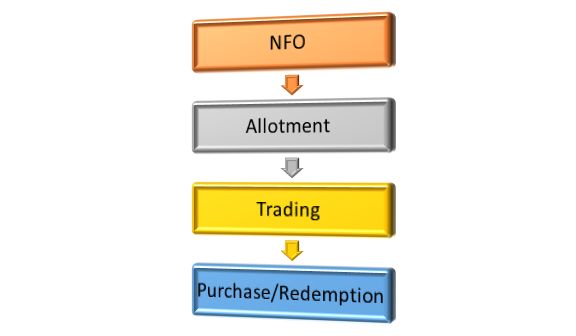Learning Center
Mutual Fund
What is a Mutual Fund?
Mutual fund is money pooled in by a large number of investors, which is then managed by a professional fund manager. The fund collects money from a large number of investors with the goal of wealth maximization, and then invests the collected funds in a diversified portfolio of equities, bonds and fixed income securities.
The investors receive share units in accordance to their investment in the fund. The Net Asset Value (NAV) of the fund is calculated to determine the profits generated from the fund, which is then distributed to the investors in proportion to the number of shares held, after deducting the costs and commissions of operating the fund.
Mutual Funds vs Equity
Wealth creation can be done by investing directly in the shares of good companies or through an investment in Mutual Funds. Direct investment in shares carries a relatively higher risk element and the task of monitoring the performance of hundreds of stocks and selecting a few good companies from hundreds of them can be a daunting task.
When it comes to Mutual Funds, the expert fund managers do the stock picking and monitor the performance of hundreds of stocks listed on the stock exchange. An investor only needs to keep track of the performance of the fund and not individual stocks within. Dividend options and Systematic Investment Plan (SIP) provides investment flexibility, another factor that makes Mutual Funds an attractive proposition.
Benefits of Mutual Fund
- No Prior Knowledge of Markets Needed to Invest
- Fund Managed by Expert Fund Managers
- Diversified Portfolio
- Convenient and Flexible to Buy and Sell
- Highly Liquid
Types of Mutual Fund
- Open-Ended Mutual Fund
- Closed-Ended Mutual Fund
What is an Open-Ended Mutual Fund?
Process of Open End Mutual Fund
How do Open-Ended Mutual Funds work?
Mutual funds are issued to the market through a New Fund Offer (NFO). After the closure of the NFO, shares are allotted to individual investors. Post-allotment process the shares can be traded at the distribution outlets provided by the fund manager, based on the net asset value (NAV) computed daily.
Open-ended mutual funds are very liquid as investors can conveniently buy and sell shares at the distribution outlets. However, investors may have to bear an exit load when selling their units.

What is Exit Load?
Exit load is a fee charged to an investor for exiting a scheme of a company. Exit load is charged to investors who exit the scheme within a certain period, usually under 12 months or under 24 months period. Exit after this time period would incur no exit load.
What is Systematic Investment Plan (SIP)?
SIP is an investment plan within Mutual Funds where an investor can invest smaller installments in Mutual Fund schemes on a monthly basis instead of one huge initial investment designed to aid flexibility and convenience among investors.
The installment amount could be as little as Rs. 1000. With SIP, an investor is in control of how much to invest and when to invest and is able to ride the volatility of the market and time the market better.
Process of SIP
- No Prior Knowledge of Markets Needed to Invest
- Fund Managed by Expert Fund Managers
- Diversified Portfolio
- Convenient and Flexible to Buy and Sell
- Highly Liquid
Benefits of SIP
- Creates the Habit and Discipline of Investing Regularly
- Power of Compounding
- Convenience of Buying and Selling
- Helps Investor Stay in Control and Ride Volatility
- Light on the Wallet Compared to Lump-Sum Investment
What is a Dividend Reinvestment Plan (DRIP)?
A dividend reinvestment plan (DRIP) is an arrangement that allows investors to reinvest their cash dividends to get more units of the mutual fund instead of withdrawing their dividend income.
We provide our investors with two options to choose from:
| Growth Option | The growth option provides investors a way to accumulate more shares in the mutual fund and grow their investment size using their cash dividend return. With the growth option, the cash dividend will be automatically reinvested and the investor can enjoy the compounding benefit of such automatic reinvestment. |
|---|
| Dividend Option | The dividend option lets the investor withdraw their cash dividend as opposed to reinvesting their dividends to buy more units in the fund. |
|---|
What is a dividend modification plan?
What is a Close-Ended Mutual Fund?
How do Close-Ended funds work?
The company introduces a mutual fund through New Fund Offer (NFO), where investors can buy share units at a specified price. Once the NFO is over, no new funds can be brought from and sold to the fund house. Redemption can only be done after the maturity period is over.
Investors who want to buy and sell shares post-NFO can do so in the stock exchange, where they can trade the shares at a premium/discount to the prevailing Net Asset Value (NAV), subject to demand and supply of the shares.
